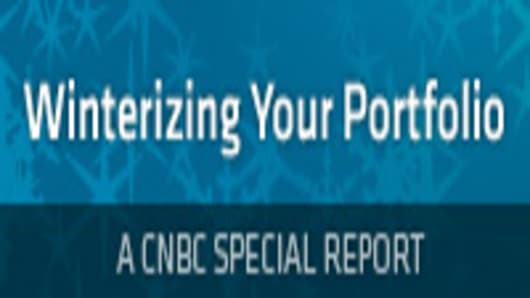After a year and a half of stock marketgains, you might be feeling a little better about your 401(k). Ok, with emphasis on a little; once shattered, it may now only be battered.
The reality is that the investment world is not only moving faster than ever, it is evolving faster than ever. Major trends in the landscape need to be considered. New trading technology and an explosion of financial instruments means more choice, more power and a more complicated game.
So use the tools available to you to glean the best of both buy-and-hold and tactical investing, while applying the basic principles of 401(k) management—rebalancing, diversification and dollar-cost averaging.
These concepts are more important that ever in the high-speed, global market of today, especially at a critical juncture such as now.
The investing world is waiting for the Federal Reserve to undertake more monetary easing, known as QE2. Such quantitative easing, which will likely involve the central bank buying bonds in the marketplace to further lower short- and long-term interest rates—has widespread and fundamental ramifications.
Balancing Act
The first consideration is determining your ideal mix of assets and sectors to reflect your risk/return appetite. For years, the rough advice was a bond/stock mix of 60/40 or even 70/30, with the percentage of bonds rising along with your age until the ratios eventually flipped-flopped.
Tech stocks, once more of a rarity, are now a standard part of any stocks component.
Now, it's more complicated with some advisors arguing that part of your portfolio be allotted to real estate and commodities, creating a four-part pie chart.
“Rebalancing is not a question of frequency," says Anthony Roth, Head of Wealth Planning, UBS Wealth Management Americas. "The trigger to rebalance is based on the percentage threshold of your portfolio. You should only rebalance when a certain portion of portfolio gets too large. If you’re in a strongly directional market you may have to rebalance three or four times a year.” (Read: For Many Market Strategists, Equities Are Top Dog Again)
In other words, a sizable decline or gain in one section of your portfolio could create an imbalance, meaning you'll have to shift around money to return to your original balance, be it 60/40 or something else.
Diversify And ProsperDiversification is meant to minimize any downside risk by putting your eggs in multiple baskets.
Different sectors and asset classes move in different directions--sometimes complete opposite ones—during the same economic cycle,
Diversify within the world of stocks and well as into other asset classes, such as currencies,commodities and real estate.
“From a 401k standpoint, most Americans are not allocated enough outside the dollar for the long term,” posits Ralph Davidson, portfolio manager for Itàu Securities.
Making sure your portfolio has a multi-dimensional, international componentto it is also a requirement these days.
Anthony Roth of UBS adds, "Our biggest call right now is in emerging-market equities.”
Diversification, however, is not just about sectors and asset classes; it’s also about format. Exchange traded funds, ETFs, for instance, offer a world of access, by bundling stocks, commodities, currencies and other assets into a single fund that moves and trades like an individual stock.
By using ETFs, there’s no need to pay higher fees to a manager to actively manage a mutual fund for extra return.
“We think that it is fine to buy an ETF—getting exposure to [emerging] markets is not about alpha performance—its about exposure,” adds Roth.
Diversification in this case is as simple as investing in theiShares MSCI Emerging Market ETFor another broad merging market fund.
Some advisors say exposure to China in particular is essential these days.
The entire Asia-Pacific region is impacted by Chinese economic growth.
The iShares MSCI Pacific Ex-Japan ETF invests in the region without putting all its eggs in the Chinese basket.
“I’m trying the China story without playing China,” says Davidson.
Stay Current
If thinking far afield is more necessary today, then rethinking old formulae is also appropriate, such as putting a sizable chunk of your retirement fund in fixed income.
With the Fed poised to implement its QE2 strategy, portfolio managers are moving the risk to the stock side of their portfolios, and playing it safe with bonds, by sticking to shorter-term paper.
Consider this forecast from Jonathan Clements, Director of Financial Education, Citi Personal Wealth Management: “Lower yields [rates] are a serious problem—without an easy answer. Conservative investors will be tempted to go hunting for yield, but that could be dangerous. We've seen the yield on the 10-year Treasury go from almost 16 percent in 1981 to just 2.5 percent today. What if that reverses?”
Is it worth the grunt work to be active? In a fixed-income-less world, absolutely. In Davidson’s words: “You have to start looking for areas in equities that are throwing off income”
“I invest in passive investments in an active way," says Davidson. "Not at the security level—at the asset allocation level. I invest in the Vanguard [S&P] 500 Index Fund.”
If that make sense to you, then consider any number of broad-based US index funds, such as the Vanguard 500 Index Fund . With a low-cost, index fund, you’ll get exposure to the underlying companies without the management fee.
Fine Tune
Finally, use time to your advantage. This third tool, known as dollar-cost averaging, works a couple of ways.
Do not move into a new position all at once.
For instance, if you want to add 8 percent of your portfolio to the iShares MSCI Emerging Market ETF , make the decision to invest 2 percent per month for four months. That way if there is a near-term hiccup, your portfolio will not suffer as much.
You'll often hear investment advisors saying how they bought shares at various price points.
Dollar-cost averaging investing also applies to to your entire portfolio. By buying consistently over time you’ll defend against volatility. If you bought shares at one price when the market is high, then buy the same shares after the market has fallen, you are averaging out your purchase price. If you liked it at $20, goes the old saying, you should also like it, perhaps even love it, at $15 or $10 dollars.
Sometimes even a small loss is a gain. If your company is matching a certain part of your contribution, make you reach the qualifying maximum. A dollar from you and a 50 cents from your company is a profitable venture, even if your investment loses 2 percent
Dollar-cost averaging is another way of avoiding the temptation to time the market, which few, if any, investors can achieve, especially with any regularity.
It's also a nice way to stay familiar with your 401(k). It is not a bank account, something that is tucked away. For that reason as well, only borrow money from it as a last resort.
Keep an eye on your 401(k) and it 's more likely to look after you when you need it in retirement.



